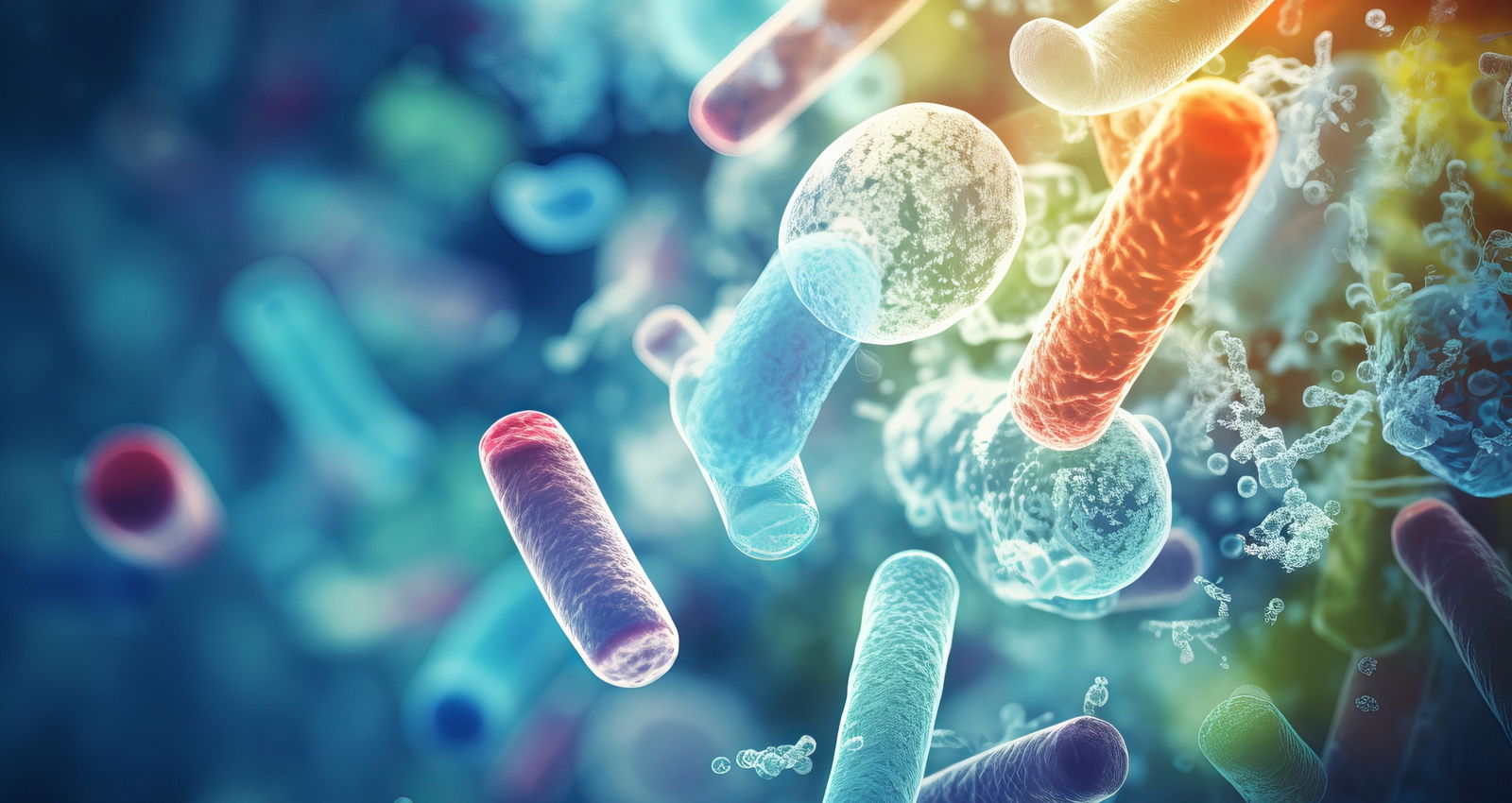 Integrating a “gut-first” approach into your practice can help your patients become more resilient, less inflamed and more responsive to chiropractic care.
Integrating a “gut-first” approach into your practice can help your patients become more resilient, less inflamed and more responsive to chiropractic care.
Guiding principles of both naturopathic and chiropractic philosophies address the root cause of disease and dysfunction, rather than merely managing the symptoms. This approach acknowledges the complex, interconnected systems that influence overall health and well-being. Both naturopathic medicine doctors (NDs) and doctors of chiropractic (DCs) recognize the inherent wisdom of the human body and its innate healing ability when supported through proper nutrition, alignment and lifestyle practices.
Naturopathic protocols generally begin by addressing a foundational concept: removing barriers to healing which may include poor diet, chronic stress, environmental toxins, food sensitivities, improper ergonomics and unfavorable lifestyle patterns. NDs are trained to help patients identify and eliminate these barriers, which then sets the stage for the body’s inherent healing mechanisms to take effect.
Nutrition is an essential part of naturopathic medicine, and NDs recognize that food is medicine. Patients thrive on a diet rich in whole, unprocessed foods, with a variety of fiber-rich fruits and vegetables, healthy fats, high-quality protein, herbs, spices and fermented ingredients to support gastrointestinal microbial diversity. Reducing the intake of sugar, alcohol, refined carbohydrates and inflammatory oils, hallmarks of the standard American diet, can mitigate gut inflammation and initiate gastrointestinal healing.
While each ND brings a unique perspective and treatment style, treating the gut is a central focus in naturopathic medicine regardless of the patient’s chief complaint or presenting health condition. The gut plays a key role in chronic health conditions and musculoskeletal complaints. This “gut-first” approach can help the body become more resilient, less inflamed and more responsive to chiropractic care.
Gut health as a cornerstone of systemic wellness
Modern research continues to validate what traditional healing systems have long recognized: The gastrointestinal tract plays a central role in overall health. Far beyond its functions in digestion and absorption, the gut is a complex ecosystem influencing nearly every major physiological system. Its reach extends through numerous gut-organ system axes where bi-directional communication pathways, such as the gut-brain, gut-immune, gut-liver and gut-bone axes, help explain how gastrointestinal imbalance contributes to systemic illness.1
Collectively referred to as the gut microbiota, trillions of microbial cells interact with dietary components, host tissues and immune mediators to maintain physiological balance. These microbes synthesize essential compounds, regulate inflammation, modulate neurotransmitter activity and influence genetic expression.
However, this ecosystem is highly susceptible to disruption from poor diet, stress, environmental toxins, pharmaceuticals and infections. When these disruptions occur, the gut can become a source of chronic disease, contributing to conditions such as autoimmune disorders, metabolic syndrome, mood imbalances and chronic inflammation.
As our understanding of the microbiome deepens, it is clear therapeutic strategies aimed at restoring microbial resilience may hold transformative potential for clinical practice. Naturopathic medicine relies on a variety of tools to modulate the microbiome and support gut health, including pre-, pro- and post-biotics.
Prebiotics: Feeding the microbial ecosystem
Prebiotics are non-digestible compounds, such as fibers and complex carbohydrates, which provide food to gut microbes. Prebiotics are generally able to bypass digestion in the upper gastrointestinal tract and arrive intact to the colon, where they can be fermented by beneficial bacteria. Essentially, prebiotics are the food source for the resident microbes of the gastrointestinal tract.
Examples of common prebiotic compounds and their corresponding food sources include:
- Inulin: Chicory root, onions, garlic and whole-grain products
- Beta-glucans: Oats, barley and mushrooms
- Pectin: Apples, citrus fruits and carrots
- Galactooligosaccharides (GOS): Legumes
Less commonly known, novel ingredients, such as the prebiotic 2’-Fucosyllactose (2’-FL), also support gut health. 2’-FL is a human milk oligosaccharide (HMO) that selectively feeds beneficial bacteria and contributes to the benefits of breastfeeding through its role in development, immune protection and microbial population cultivation.2,3 Trials have indicated adults taking a 5-gram dose for two weeks had a significant improvement in the proportion of Bifidobacteria, a bacterial species well-known for being part of a healthy microbiome.4 While 2’-FL is found in breast milk, it can also be given in supplement form.
Prebiotics can be a valuable tool for microbiome balancing, strengthening gut mucosal integrity and modulating the immune response, but as a therapeutic intervention, treatments should be personalized. Patients who suffer from certain conditions, such as small intestinal bacterial overgrowth (SIBO), may react poorly to prebiotic-rich food or supplements. These patients often need other treatments before they can tolerate the addition of prebiotics.
Probiotics: Specific tools for gut health
Probiotics are living microorganisms that confer health benefits to the host when administered in adequate amounts. As the paradigm for recommending probiotics has changed, we now understand the importance of strain specificity. Not all probiotic strains behave in the same way or offer the same physiological effects. It is important to match probiotic strains to specific clinical goals, such as regulating bowel movements, enhancing mucosal immunity, reducing inflammation or restoring gut balance after a round of antibiotics.
Examples of clinically useful probiotic strains include:
- Lactobacillus acidophilus: Promotes acidity in the gut through glucose fermentation, supporting microbiome balance.
- Saccharomyces boulardii: A probiotic yeast shown to support bowel regularity and reduce post-antibiotic dysbiosis.
- Lactobacillus paracasei (Lpc-37): Supports stress resilience and immune modulation.
- Bifidobacterium animalis subsp. lactis: Supports bowel regularity.
Many probiotic formulas contain multiple strains to support additional health benefits. Probiotics and prebiotics are also used in combination to create symbiotic and synergistic strategies for more targeted gut healing.
Postbiotics: Functional compounds of gut healing
Postbiotics are nonliving compounds produced by probiotic bacteria when they digest prebiotics. These beneficial compounds include enzymes, proteins, vitamins, amino acids, surface proteins and short chain fatty acids (SCFAs), such as acetate, propionate and butyrate.5 SCFAs have various local and systemic roles and functions, such as helping regulate appetite and metabolism, providing a key energy source for colonocytes, mitigating inflammation and influencing epigenetic pathways.
While oral supplementation with postbiotics is possible, without the proper microbial ecosystem, supplementing alone may be inefficient. Foundationally, you must still address microbial diversity, provide prebiotic substrates and heal the GI lining for long-term, sustainable results.
Final thoughts
Hippocrates was ahead of his time when he stated, “All disease begins in the gut,” a core guiding tenet of naturopathic medicine. By addressing this central hub of disease and dysfunction, NDs and DCs can offer a synergistic model of care to enhance patient outcomes.
From removing barriers to healing and leveraging targeted nutritional and microbial strategies, gut-centered approaches support comprehensive wellness, from musculoskeletal health to cognitive clarity. Integrating prebiotic, probiotic and postbiotic strategies into care supports the body’s innate intelligence and whole-person healing.
Daina Parent, ND, is a licensed naturopathic doctor and clinical educator for Standard Process Inc. With a background in hormone, gut and thyroid health, Parent blends her clinical experience with a passion for education to help practitioners and patients achieve optimal, sustainable health outcomes. For follow-up or product-related questions, please contact education@standardprocess.com.
References
Carabotti M, et al. The gut-brain axis: Interactions between enteric microbiota, central and enteric nervous systems. Ann Gastroenterol. 2015;8(2):203–209. https://pubmed.ncbi.nlm.nih.gov/25830558/. Accessed July 1, 2025.
Bode L. Human milk oligosaccharides: Every baby needs a sugar mama. Glycobiology. 2012;22(9):1147–1162. https://pubmed.ncbi.nlm.nih.gov/22513036/. Accessed July 1, 2025.
Marcobal A, et al. Consumption of human milk oligosaccharides by gut-related microbes. J Agric Food Chem. 2010;58(9):5334–5340. https://pubmed.ncbi.nlm.nih.gov/20394371/. Accessed July 1, 2025.
Ellison E, et al. Oral supplementation of healthy adults with 2’-O-fucosyllactose and lacto-N-neotetraose is well tolerated and shifts the intestinal microbiota. Br J Nutr. 2016;116(8):1356–1368. https://pubmed.ncbi.nlm.nih.gov/27719686/. Accessed July 1, 2025.
Nataraj BH, et al. Postbiotics-parabiotics: The new horizons in microbial biotherapy and functional foods. Microb Cell Fact. 2020;19(1):168–189. https://pubmed.ncbi.nlm.nih.gov/32819443/. Accessed July 1, 2025.
 Integrating a “gut-first” approach into your practice can help your patients become more resilient, less inflamed and more responsive to chiropractic care.
Integrating a “gut-first” approach into your practice can help your patients become more resilient, less inflamed and more responsive to chiropractic care.





